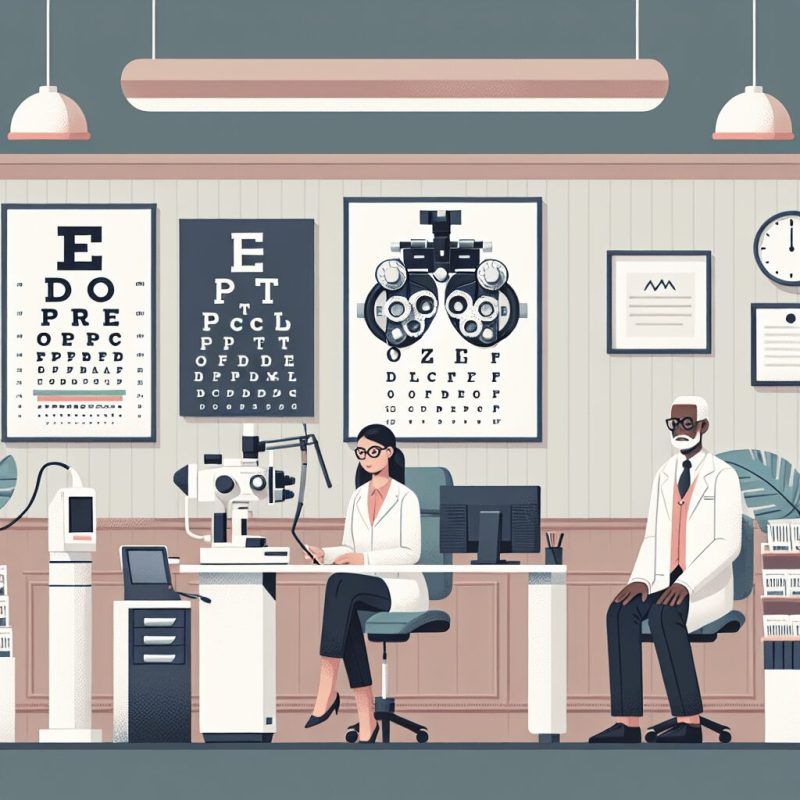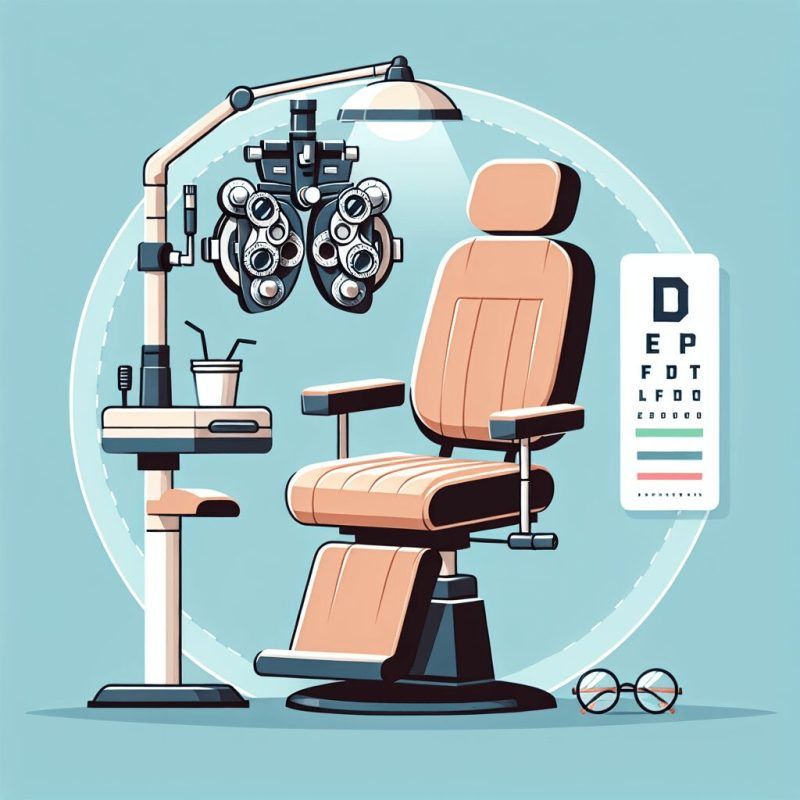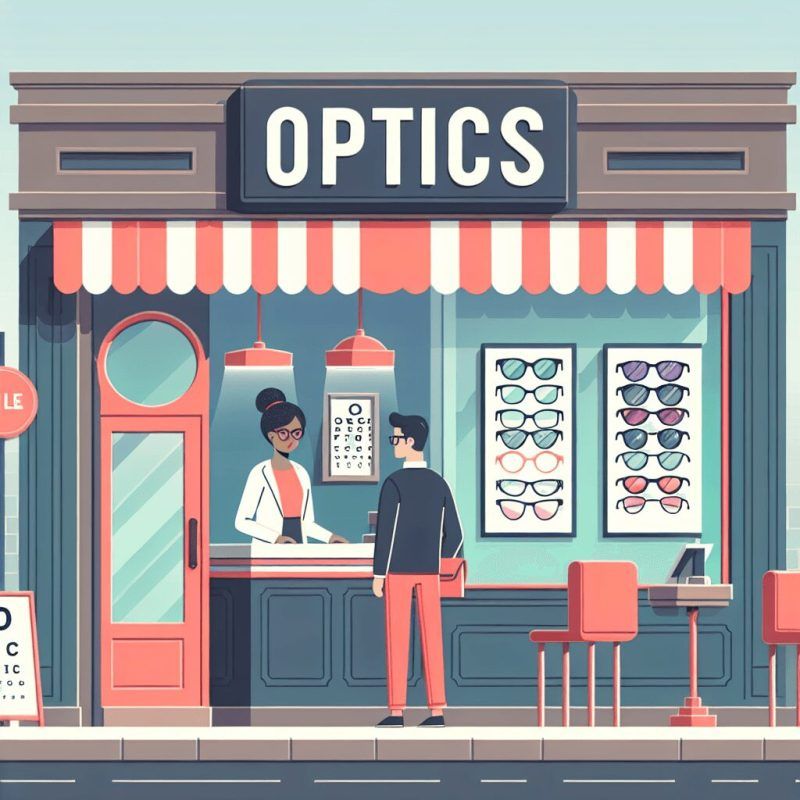Doctor's Corner
Appointment for Eye Exam: What to Expect and Prepare
Scheduling an eye exam is important for everyone, whether you wear glasses or not. These exams help catch vision problems early and can even reveal other health issues. With a typical exam costing around $69 and discounts often available through insurance, it’s a wise investment in your health. This article will explain what to expect during your eye exam and how to prepare so you can make the most of your visit.
Understanding the Importance of Eye Exams
Regular eye exams are important for overall health care because they help an optometrist assess not only vision problems but also general well-being. A comprehensive eye health check can reveal warning signs of serious conditions like diabetes and hypertension. Through specific tests, an eye doctor can detect issues such as glaucoma, where increased pressure on the optic nerve may lead to permanent vision loss.
If an individual frequently uses screens, they may experience eye strain or computer vision syndrome, which results in symptoms like dry eyes and headaches.
Additionally, for those who wear contact lenses or have conditions like astigmatism, updated prescriptions are necessary for clear vision. Regular exams, including retinal imaging, allow for early detection of eye conditions, which can protect long-term vision health. Through telehealth options, individuals can easily schedule their comprehensive eye exam at a convenient location, ensuring timely support and access to vision insurance benefits.
When to Schedule Your Appointment for an Eye Exam
Scheduling regular eye exams helps monitor overall health. Children should have their first exam around six months, then again at three years, and once before kindergarten. From ages six to eighteen, yearly exams are recommended. Adults aged nineteen to sixty should see an optometrist every one to two years, while those over sixty should schedule an annual visit. Individuals with health concerns such as diabetes or hypertension may need more frequent visits.
Immediate appointments are necessary if someone experiences sudden changes in vision, such as increased floaters or blurred vision, as these can indicate serious issues like glaucoma affecting the optic nerve. Eye strain caused by excessive screen time can also lead to headaches and dry eyes. To ensure timely care, it’s advisable to book an appointment well in advance.
For convenience, telehealth options allow for comprehensive eye health checks from various locations, making it easier to manage eye exams and prescriptions for contact lenses or glasses while staying aware of warning signs of vision problems.
How to Find a Qualified Eye Care Professional
When searching for a qualified eye care professional, individuals should look for an optometrist with appropriate credentials, which may include a degree in optometry and state licensure. Patients can evaluate the experience and reputation of an eye care professional by checking reviews and asking for recommendations from friends or family.
It is also beneficial to inquire about specific tests conducted during a comprehensive eye exam, such as those for diabetes or hypertension indicators and retinal imaging, to ensure a thorough assessment of overall health and warning signs of conditions like glaucoma. Accessibility is another significant factor, as convenient locations can promote regular eye health check-ups.
Additionally, knowing if the provider offers services like telehealth options or specializes in fitting contact lenses is helpful, especially for those experiencing digital eye strain or computer vision syndrome. Regular visits can help identify issues like dry eyes, headaches, blurred vision, or astigmatism early on, preventing more serious vision problems later. Having vision insurance coverage can also assist in managing the costs associated with eye exams and treatments.
Preparing for Your Appointment for an Eye Exam
Gathering Necessary Documents
Before an eye exam, patients should gather important documents such as their vision insurance card, a government-issued photo ID, and any relevant medical records, especially if they have diabetes or hypertension. Being prepared helps ensure a smooth process when checking for coverage on the comprehensive eye health exam. Individuals can reach out to their insurance provider beforehand to confirm coverage details, helping avoid surprises at the appointment.
Bringing previous eye exam results can be helpful, as they assist the optometrist in understanding the patient’s vision history, including any issues related to glaucoma, astigmatism, or computer vision syndrome. This history can lead to tailored tests during the exam, which may include retinal imaging to detect warning signs related to the optic nerve or retina.
Additionally, providing details about symptoms like headaches or dry eyes can guide the optometrist in selecting specific tests to provide the best care through telehealth options or in-person visits.
Creating a List of Symptoms
When preparing for an appointment with an optometrist, it’s helpful to include specific symptoms related to vision or eye health, such as blurred vision , dry eyes, headaches, and signs of eye strain, which can occur during screen use. To help the eye care professional understand concerns, individuals can categorize symptoms by severity and frequency, distinguishing between acute and chronic issues.
Noting specific instances of symptoms, like difficulty focusing at night or noticing floaters, can point to underlying issues such as glaucoma or retinal problems. Documenting how long symptoms last and how often they occur can clarify the situation; for instance, mentioning the duration of headaches or frequency of blurry vision assists the optometrist in assessing overall health and deciding if further tests, like retinal imaging or specific checks for diabetes or hypertension, are necessary during the eye exam.
This structured list is useful for identifying potential issues and ensuring a thorough health check. Telehealth options may also be available at some locations for added convenience.
Noting Family Eye Health History
During the eye exam, the optometrist gathers family health history to provide a comprehensive eye health check. It’s important to note if any family members have been diagnosed with conditions like diabetes or hypertension since these can lead to serious vision problems. A history of common vision issues, such as nearsightedness, farsightedness, or astigmatism, also helps the optometrist tailor specific tests during the exam.
Genetic eye disorders, including glaucoma and macular degeneration, should be documented as well, as these can indicate potential warning signs for the patient’s eye health.
Additionally, with the rise of eye strain and computer vision syndrome, recognizing symptoms like dry eyes and blurred vision can be significant. Telehealth options may offer convenient ways to monitor these conditions. Keeping track of family eye health history informs the optometrist, enhancing the likelihood of early detection of issues that could affect the optic nerve and the retina, ultimately leading to better outcomes in vision care.
What Happens During Your Appointment for an Eye Exam
Initial Consultation with the Eye Care Professional
During the initial consultation, the patient should share their overall health history, including conditions like diabetes and hypertension. They should describe any vision problems, such as blurred vision or dry eyes, and mention any symptoms like headaches or issues with eye strain and computer vision syndrome.
This information helps the optometrist determine which specific tests to conduct during the comprehensive eye exam, including checks for glaucoma and assessments of the retina and optic nerve. The patient can also inquire about the examination process, asking what each test is for and how it assesses their eye health. If the patient needs contact lenses, they should express this to receive appropriate fittings and guidance. Discussing the potential need for retinal imaging and how vision insurance might cover these services is also helpful. Open communication ensures that warning signs of eye diseases are identified early, allowing for timely intervention.
Vision Tests and Procedures
During a thorough eye exam, the optometrist carries out various vision tests and procedures to assess overall health and identify any vision issues. These usually include measuring visual acuity with eye charts, checking depth perception, and evaluating color vision. Specific tests are selected based on a patient’s symptoms and medical history, such as inquiries about previous headaches or conditions like diabetes or hypertension.
The exam may involve tonometry to assess pressure in the eyes, which is important for identifying glaucoma, and dilation to examine the retina for signs of health concerns. With advancements in telehealth, some places also provide quick and convenient in-store virtual exams. Each visit may last around 30 minutes or longer, depending on the specific tests conducted, such as keratometry for astigmatism or retinal imaging for detailed evaluations.
For individuals experiencing symptoms like digital eye strain, which can cause dry eyes and blurred vision, a thorough eye health assessment can lead to helpful recommendations and adjustments in their vision insurance coverage for lenses or treatments.
Receiving Your Prescription and Recommendations
After an eye exam, the patient should ensure they understand their prescription from the optometrist, which may include details about glasses or contact lenses needed to correct vision problems like nearsightedness or astigmatism. They should inquire about any specific tests performed during the comprehensive eye health check and ask how these tests relate to their overall health.
If the patient is unsure about any recommendations, such as treatment for headaches or managing eye strain, they can ask questions before leaving the office to gain clarity. Once at home, if there are lingering questions about the prescription or recommendations, the patient should not hesitate to reach out to their healthcare provider or use telehealth options to discuss any concerns. Being proactive can help catch warning signs of health issues like glaucoma or hypertension, as these can be linked to eye health, indicating the importance of regular check-ups and understanding one’s vision care needs.
After the Appointment for Eye Exam
Understanding Your Eye Health Results
Individuals should consider specific tests, such as those for glaucoma and diabetes when interpreting their eye health results. An optometrist conducts these assessments and often includes eye pressure measurements to check optic nerve health and retinal imaging to evaluate the retina. Results indicating conditions like astigmatism or hypertension may point to potential vision problems.
By understanding these results, individuals can make informed decisions about their vision care, including when to schedule follow-up exams or whether they need contact lenses. Common terms in these assessments include measurements of visual acuity, which address clarity of vision, and tests for symptoms of eye strain, like dry eyes and headaches. Recognizing warning signs from their comprehensive eye health check can help individuals take action to prevent further issues.
Telehealth services can offer convenient access to follow-up consults or prescriptions based on these results, ensuring ongoing management of eye health. Using vision insurance effectively can also lower costs for necessary evaluations and treatments.
Scheduling Follow-Up Appointments
To schedule follow-up appointments effectively, individuals can start by asking their optometrist how often they should return for a comprehensive eye exam, especially if they have conditions like diabetes or a family history of glaucoma. Keeping track of when the last appointment took place helps ensure timely visits. If eye care professionals detect warning signs during a check, such as dry eyes, headaches, or blurred vision, it could prompt more frequent appointments.
When making an appointment, patients should provide their overall health information, including any symptoms or underlying conditions like hypertension. Sharing details about their vision problems allows the optometrist to determine specific tests needed during the visit. With options like telehealth appointments, individuals find it easier to access comprehensive eye health checks without needing to travel, saving both time and effort.
They should also check their vision insurance to understand coverage for tests such as retinal imaging or assessments for computer vision syndrome that may result from extensive screen use.
Tips for a Successful Appointment for Eye Exam
Tip 1: Arrive Early to Your Appointment
Arriving early for an eye exam offers several benefits that enhance the overall experience. This extra time allows patients to complete any necessary paperwork, ensuring that the optometrist can focus on their eyes and overall health during the comprehensive eye health check. Unforeseen circumstances, like last-minute delays or confusion about the location, can be better managed with this buffer.
It also gives patients the chance to relax, reducing any anxiety that might come from the appointment. By settling in early, patients can prepare for the specific tests needed, such as retinal imaging or assessments for issues like glaucoma or diabetes. This preparation is especially important for spotting warning signs that could indicate serious vision problems or conditions related to hypertension. Those experiencing eye strain, dry eyes, or headaches benefit from a calm start, allowing them to communicate their issues effectively.
Tip 2: Wear Comfortable Clothing
Wearing comfortable clothing can foster a relaxed experience during an eye exam, as snug or restrictive attire may divert attention from specific tests. Loose-fitting garments like t-shirts or sweatpants enable ease of movement, helping individuals to remain still while the optometrist conducts various assessments. Many find cotton fabrics particularly pleasant, as they are soft and breathable, which is helpful when managing potential discomfort from eye pressure tests or retinal imaging.
Additionally, it’s wise to avoid heavy layers, as exams may include air puffs to the eye, which can be surprising. Appropriate clothing can also help minimize instances of headaches or eye strain, especially if patients need to wear contact lenses afterward. A focus on wearing loose clothing enhances the overall experience during the eye health check.
It allows for a smooth process when addressing vision issues, such as glaucoma or astigmatism, and assists in detecting any warning signs related to diabetes or hypertension during the comprehensive eye exam.
FAQ
What should I bring to my eye exam appointment?
Bring your current glasses or contact lenses, any prescription information, a list of medications, and your insurance card. It’s also helpful to have a driver if you expect to need dilation drops.
How long does an eye exam typically take?
An eye exam typically takes 30 to 60 minutes. Plan for additional time if you need tests like retinal imaging or if your doctor discusses options for glasses or contacts. Arriving early can help ensure a smooth process.
What types of tests will be conducted during my eye exam?
During your eye exam, tests may include visual acuity assessments, a refraction test to determine your prescription, a retinal examination, and tonometry to check eye pressure. Bring a list of any symptoms or concerns to discuss with your eye care professional.
Can I wear my contact lenses or glasses during the examination?
Yes, you can wear your contact lenses or glasses during the examination. Just ensure your lenses are clean and comfortable, and bring your glasses if you prefer. For accurate vision assessment, wearing your usual corrective lenses is recommended.
Are there any specific preparations I need to do before my eye exam?
Before your eye exam, gather your glasses or contacts, prepare a list of current medications, and note any vision problems you’ve experienced. Avoid wearing eye makeup and bring sunglasses after the exam, as your eyes may be sensitive.
Be ready for your eye exam with a few simple steps. Bring your current glasses or contacts and a list of any medications, and be prepared to discuss any vision concerns. At Superior Eye Care in The Woodlands or Quality Eye Care in Willowbrook, Texas, our team will provide a thorough examination and personalized care to ensure your eye health and vision are at their best.
The post Appointment for Eye Exam: What to Expect and Prepare first appeared on Optometrist in Woodlands & Willowbrook TX.
Doctor's Corner





